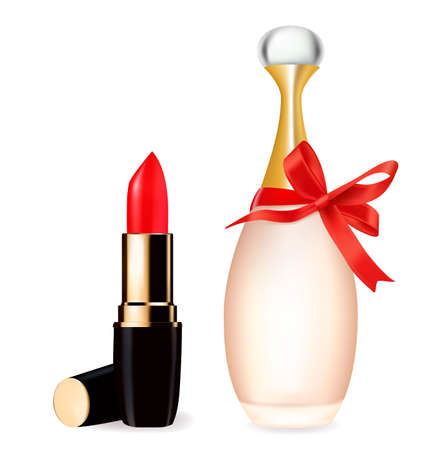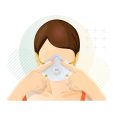Understanding Rosacea and Sensitive Skin
Rosacea is a chronic skin condition that affects millions of Americans, often causing persistent redness, visible blood vessels, and sometimes small, red, pus-filled bumps on the face. Its exact cause remains unknown, but it is commonly linked to genetic and environmental factors. For those living in the U.S., with frequent exposure to sun, wind, and fluctuating climates, rosacea symptoms can be especially pronounced. Common signs include facial flushing, burning or stinging sensations, and increased skin sensitivity. Because American lifestyles often involve outdoor activities and varying weather conditions, choosing the right skincare products becomes crucial. Ingredients in skincare can either soothe or aggravate rosacea-prone skin—making informed choices essential for anyone managing sensitive skin in the U.S. environment. By understanding how different ingredients interact with rosacea symptoms, you can better protect your skin’s barrier and avoid unnecessary flare-ups.
2. Rosacea-Friendly Ingredients to Look For
If you have rosacea-prone skin, choosing the right skincare ingredients is crucial for minimizing flare-ups and supporting your skin barrier. The U.S. market offers a variety of gentle, dermatologist-recommended ingredients that are both effective and soothing for sensitive complexions. Below is a table summarizing top rosacea-friendly ingredients, how they benefit the skin, and examples of well-known American products where you might find them:
| Ingredient | Benefits for Rosacea-Prone Skin | Common U.S. Product Examples |
|---|---|---|
| Niacinamide (Vitamin B3) | Reduces inflammation, strengthens skin barrier, minimizes redness | CeraVe PM Facial Moisturizing Lotion, Olay Regenerist Micro-Sculpting Cream |
| Ceramides | Restores skin barrier, locks in moisture, reduces sensitivity | CeraVe Hydrating Cleanser, Vanicream Moisturizing Cream |
| Aloe Vera | Soothes irritation, calms redness, hydrates gently | Aveeno Ultra-Calming Gel Cleanser, Paula’s Choice Calm Redness Relief Moisturizer |
| Azelaic Acid | Anti-inflammatory, helps reduce bumps and redness specific to rosacea | The Ordinary Azelaic Acid Suspension 10%, Paula’s Choice 10% Azelaic Acid Booster |
| Allantoin | Calms and softens skin, promotes healing | Eucerin Redness Relief Night Creme, La Roche-Posay Toleriane Double Repair Face Moisturizer |
| Licorice Root Extract (Glycyrrhiza Glabra) | Brightens skin tone, reduces visible redness and irritation | Eucerin Redness Relief Daily Perfecting Lotion SPF 15, First Aid Beauty Ultra Repair Cream |
| Squalane | Lightweight hydration without clogging pores or causing irritation | Biossance Squalane + Omega Repair Cream, The Ordinary 100% Plant-Derived Squalane |
| Feverfew Extract (Tanacetum Parthenium) | Antioxidant-rich; calms sensitive or reactive skin types | Aveeno Ultra-Calming Daily Moisturizer SPF 15, Aveeno Ultra-Calming Foaming Cleanser |
| Green Tea Extract (Camellia Sinensis) | Potent antioxidant; reduces inflammation and soothes flushed skin | Paula’s Choice Calm Redness Relief Toner, Mario Badescu Facial Spray with Aloe, Herbs and Rosewater |
Tips for Choosing Rosacea-Friendly Products in the U.S.
- Look for fragrance-free and alcohol-free labels: Many American brands offer unscented versions designed for sensitive or reactive skin.
- Select dermatologist-tested formulas: Products labeled “non-comedogenic” or “hypoallergenic” can help minimize irritation risks.
- Prioritize simple ingredient lists: Fewer additives reduce the chance of triggering rosacea symptoms.
Selecting products featuring these top ingredients can make a significant difference in comfort and appearance for those living with rosacea in the United States.

3. Irritating Ingredients to Avoid
When shopping for skincare in the U.S., it’s crucial for rosacea-prone individuals to recognize ingredients that are notorious for causing flare-ups or worsening symptoms. Many common American skincare products—ranging from cleansers to moisturizers—contain substances that can be harsh on sensitive skin. Here’s what you should watch out for:
Fragrances and Perfumes
Artificial fragrances, both synthetic and natural, are one of the leading irritants for people with rosacea. Even products labeled “unscented” can sometimes include masking fragrances, so always check ingredient lists for terms like “parfum,” “fragrance,” or essential oils such as lavender and citrus extracts.
Alcohol-Based Ingredients
Certain alcohols commonly used in toners and astringents—including denatured alcohol (alcohol denat.), SD alcohol, and isopropyl alcohol—can strip the skin’s natural barrier, leading to dryness, irritation, and increased redness.
Harsh Exfoliants
Physical scrubs containing rough particles like apricot kernels or walnut shells can cause micro-tears in sensitive skin. Chemical exfoliants with high concentrations of alpha hydroxy acids (AHAs), beta hydroxy acids (BHAs), or retinoids may also trigger inflammation and should be approached with caution.
Sulfates and Foaming Agents
Sodium lauryl sulfate (SLS) and sodium laureth sulfate (SLES) are common foaming agents found in American cleansers and shampoos. These ingredients can disrupt the skin’s protective layer and contribute to irritation for those with rosacea.
Menthyl & Cooling Agents
Ingredients that create a cooling sensation—like menthol, camphor, peppermint oil, or eucalyptus oil—are often added to give a fresh feeling but can provoke stinging, burning, and increased redness in rosacea-prone skin.
Preservatives & Other Triggers
Certain preservatives such as parabens and formaldehyde releasers (e.g., DMDM hydantoin) may also lead to sensitivity. Additionally, avoid witch hazel, benzoyl peroxide, and chemical sunscreens containing oxybenzone or avobenzone, all of which are frequently linked to irritation in American-made products.
Always patch-test new products before full application, carefully read ingredient labels, and opt for formulas specifically marketed as gentle or suitable for sensitive skin when managing rosacea symptoms.
4. Decoding Ingredient Labels Like a Pro
Shopping for rosacea-friendly skincare in the U.S. can feel overwhelming, but mastering ingredient labels gives you real control over your choices. Here’s how to break down those long lists and spot what works—or what might trigger a flare-up—before you buy.
Understand Ingredient Order and Naming
In the U.S., skincare ingredients are listed in descending order by concentration (from highest to lowest) until you hit 1%—then they can appear in any order. The first five ingredients usually make up the bulk of the formula, so pay special attention to those.
Common Label Terms Explained
| Label Term | What It Means | Why It Matters for Rosacea |
|---|---|---|
| Fragrance/Parfum | Covers all added scents, natural or synthetic | Common irritant; best avoided |
| Alcohol (SD Alcohol, Denatured Alcohol) | Drying agents, not fatty alcohols like cetyl or stearyl | Can strip skin and worsen sensitivity |
| Non-comedogenic | Formulated not to clog pores | Less likely to aggravate sensitive, rosacea-prone skin |
Tactical Tips for Reading Ingredient Lists
- If “fragrance” or “alcohol” appears among the top five, skip it.
- Look for gentle actives: niacinamide, azelaic acid, centella asiatica—these should be near the top for maximum benefit.
- Sensitive-skin keywords: “hypoallergenic,” “for sensitive skin,” and “dermatologist-tested” are good signs, but always check the actual list.
Avoiding Red Flags Unique to U.S. Products
The U.S. allows certain preservatives and dyes that may be banned elsewhere. Watch out for parabens, formaldehyde releasers (like DMDM hydantoin), and FD&C dyes—these can all trigger rosacea flares.
Your Quick-Scan Ingredient List Checklist:
- Avoid: Fragrance/parfum, SD alcohol/denatured alcohol, menthol, camphor, eucalyptus oil, sodium lauryl sulfate.
- Look for: Glycerin, squalane, hyaluronic acid, ceramides, niacinamide, panthenol (B5), green tea extract.
The more familiar you get with label lingo and ingredient order, the easier it is to shop confidently—even when new products hit U.S. shelves. This practical approach keeps your routine streamlined and your rosacea under control.
5. Extra Tips for Building Your Rosacea-Friendly Routine
Insider Advice on Layering Skincare Products
When managing rosacea, how you layer your skincare can make a huge difference. Always start with the gentlest product and work up to heavier creams or sunscreen. In an American context, this typically means cleansing first, applying any prescribed or OTC topical treatments next, then layering a lightweight moisturizer, and finally finishing with a mineral-based sunscreen. Avoid overcomplicating your routine—less is often more when it comes to sensitive, rosacea-prone skin.
Testing New Products the Safe Way
Patch testing is crucial before introducing anything new into your regimen. Apply a small amount of product behind your ear or on your jawline and wait 24-48 hours to check for irritation or redness. This extra step may feel tedious, but it’s common advice from U.S. dermatologists and can save you from unexpected flare-ups. Remember, just because a product is labeled “for sensitive skin” doesn’t guarantee it’s suitable for rosacea—always test first.
Building a Routine That Works for You
No two cases of rosacea are exactly alike, so personalization matters. Consider keeping a skincare journal to track which ingredients or routines trigger reactions. In America, access to dermatologist guidance is widespread—don’t hesitate to consult a board-certified derm if you’re struggling to find products that work. And remember: avoid hopping between too many new products at once; give each addition at least two weeks before making changes so you can accurately assess its impact.
Pro Tip: Simplicity and Consistency Are Key
The most effective rosacea-friendly routines focus on gentle cleansing, solid hydration, and diligent sun protection. Choose fragrance-free formulas and look for labels like “non-comedogenic” and “hypoallergenic.” Stay patient and consistent—rosacea management is about long-term results, not quick fixes.
6. When to Seek Professional Help
Managing rosacea with the right skincare ingredients can go a long way, but there are times when over-the-counter products and lifestyle tweaks aren’t enough. Recognizing when your rosacea requires medical attention is crucial for preventing flare-ups from escalating or causing long-term skin damage.
Signs Your Rosacea Needs Medical Attention
- Persistent redness: If facial redness doesn’t subside with gentle skincare or home remedies, it’s time to consult a professional.
- Frequent flare-ups: Experiencing repeated or worsening episodes even after using rosacea-friendly products indicates your condition may need prescription treatment.
- Pain, burning, or stinging: Significant discomfort, swelling, or sensitivity that interferes with daily life should not be ignored.
- Thickening skin: Any signs of bumpy texture or thickening (especially around the nose) require prompt medical evaluation to prevent permanent changes.
- Eye involvement: If you notice watery, irritated, or bloodshot eyes—sometimes called ocular rosacea—see a dermatologist or eye specialist right away.
How to Approach U.S. Dermatologists and Skincare Professionals
The U.S. healthcare system prioritizes patient advocacy and open communication. Here’s how to make the most of your dermatology visit:
Prepare Your History
- Bring a list of products and ingredients you’ve tried (both helpful and irritating).
- Document your symptoms with photos and notes about triggers or patterns.
Ask Targeted Questions
- Inquire about prescription options for stubborn cases, such as topical antibiotics or laser treatments.
- If your rosacea flares up from certain ingredients, ask about patch testing or alternative routines tailored to sensitive skin.
Navigating the Appointment
- You don’t need a referral to see most dermatologists in the U.S., but check your insurance plan just in case.
- If cost is a concern, ask about generic prescriptions or samples during your visit.
Your Takeaway
If you’re doing everything right—choosing gentle, rosacea-friendly ingredients and avoiding common triggers—but still struggling with symptoms, don’t hesitate to reach out for expert help. U.S. dermatologists are well-versed in advanced therapies and can create a personalized treatment plan that keeps your skin healthy and comfortable.

